Shannon Dwyer Artist
Original Artwork
Couldn't load pickup availability
Painting the Spotted Pardalote felt like working on a tiny, living jewel! So small, so intricate and absolutely magical! I was completely enchanted by its delicate spots and bold flashes of colour, like someone had dotted it with a fine paintbrush dipped in white and sunshine. Using watercolour and ink to build up its soft textures and patterned feathers was a joyful challenge, and I loved watching it come to life layer by layer. There’s something whimsical and almost fairy-like about this little bird, and painting it felt like stepping into a secret, leafy world where tiny wonders live.
This artwork has been hand painted with professional-grade watercolour paint and detailed with a traditional nib and highly concentrated ink on 300gsm 100% cotton watercolour paper. See more details below.
One of Australia’s smallest birds, the Spotted Pardalote has beautifully unique plumage which has earned it the fashionable nickname ‘Diamondbird’. Found in eastern and southern Australia, mostly in eucalypt forests and woodlands, but also occur in urban areas with a well-established eucalypt canopy. At only 9cm long, Spotted Pardalotes can sometimes be hard to spot. Look for them flittering through the canopy of Blue Gums, Pink Gums or River Red Gums in search of lerps and psyllids. A lerp is the crystal-like honeydew casing that a psyllid insect creates as a kind of shelter for its body. Psyllids are plant lice that suck the sap from eucalypts which isn’t a problem for a healthy tree. However, when a forest is under stress due to weeds, drought, logging or changed fire patterns (which has been an issue in Australian bushland for a while now), high numbers of psyllids can cause eucalypts to become sick and eventually die. By eating lerps and psyllids, Spotted Pardalotes are playing their part to lessen the stress on our native plants and keep our forests healthy. During the breeding season, Spotted Pardalote parents diligently drill a narrow, circular tunnel into an earth bank. At the end of the tunnel, they excavate a large nest chamber and line it with strips of bark to lay their eggs – they’ve also been found nesting in pipes, carpet rolls and garage roll-a-doors! It also changes its tune in breeding season; “Sleep-may-be, Sleep-may-be.” This monotonous, repetitive call has earned it the nickname: the Headache Bird. Conservation Status: Secure.
*Price is for mounted artwork only. Any framed image examples are for illustrative purposes only.*
Share
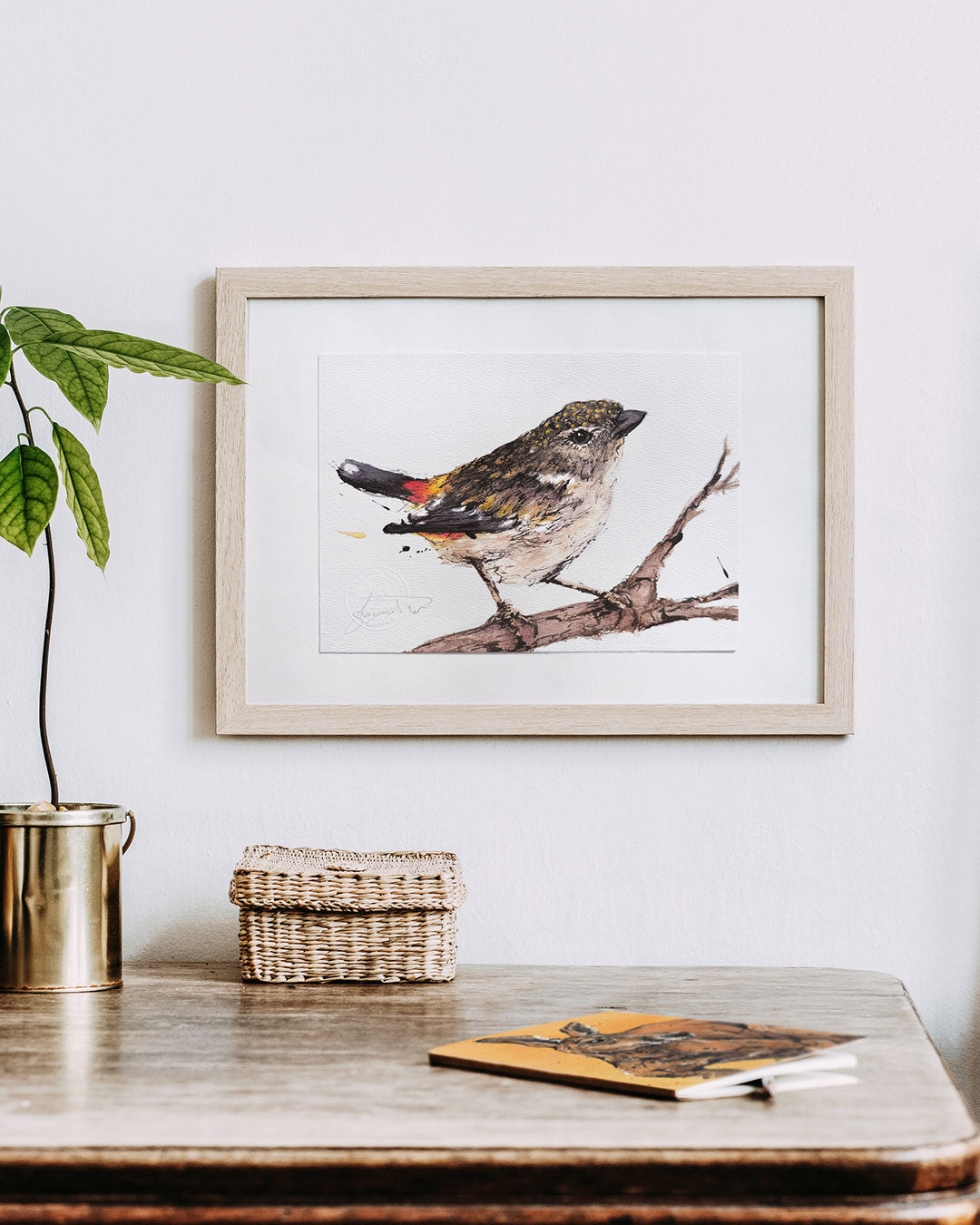
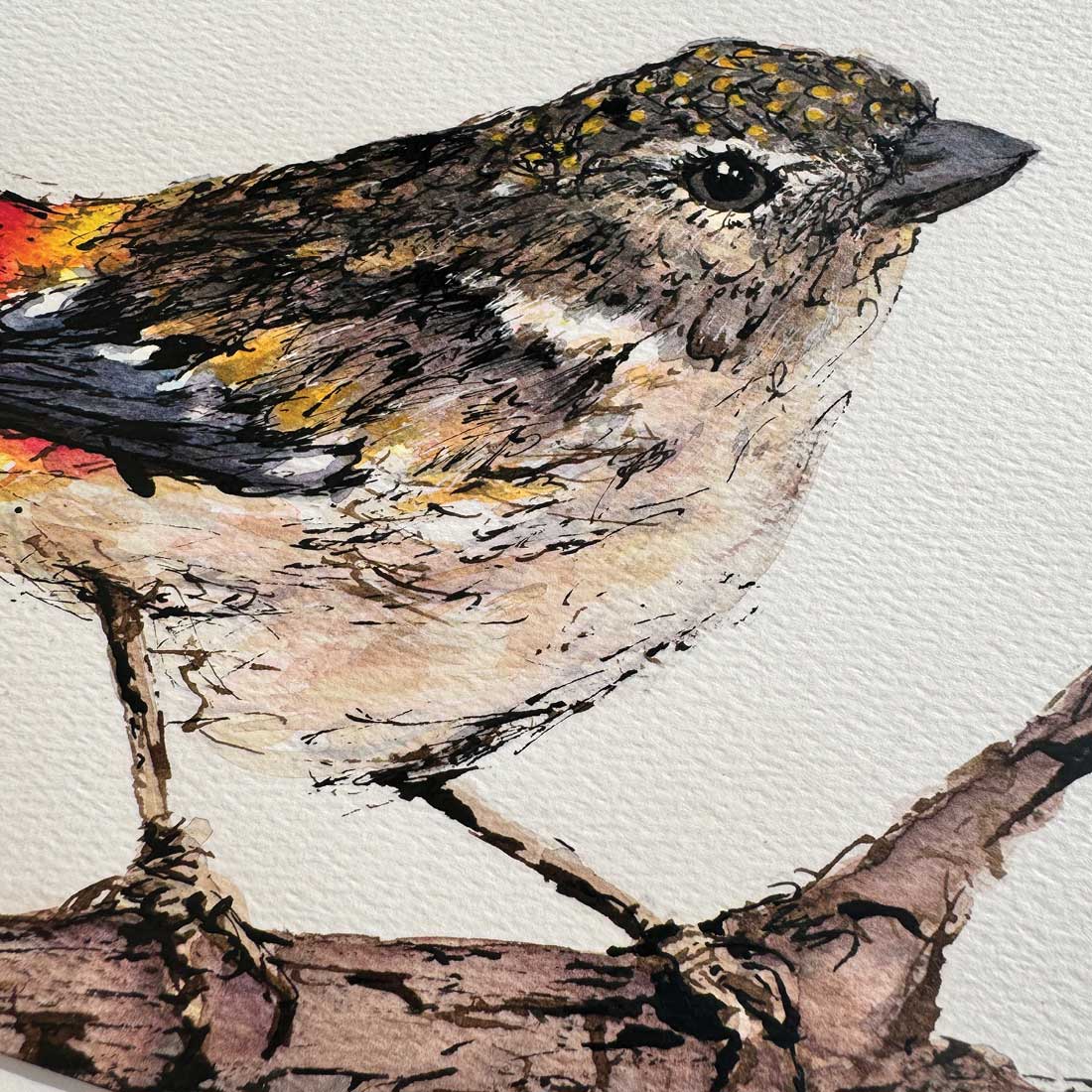
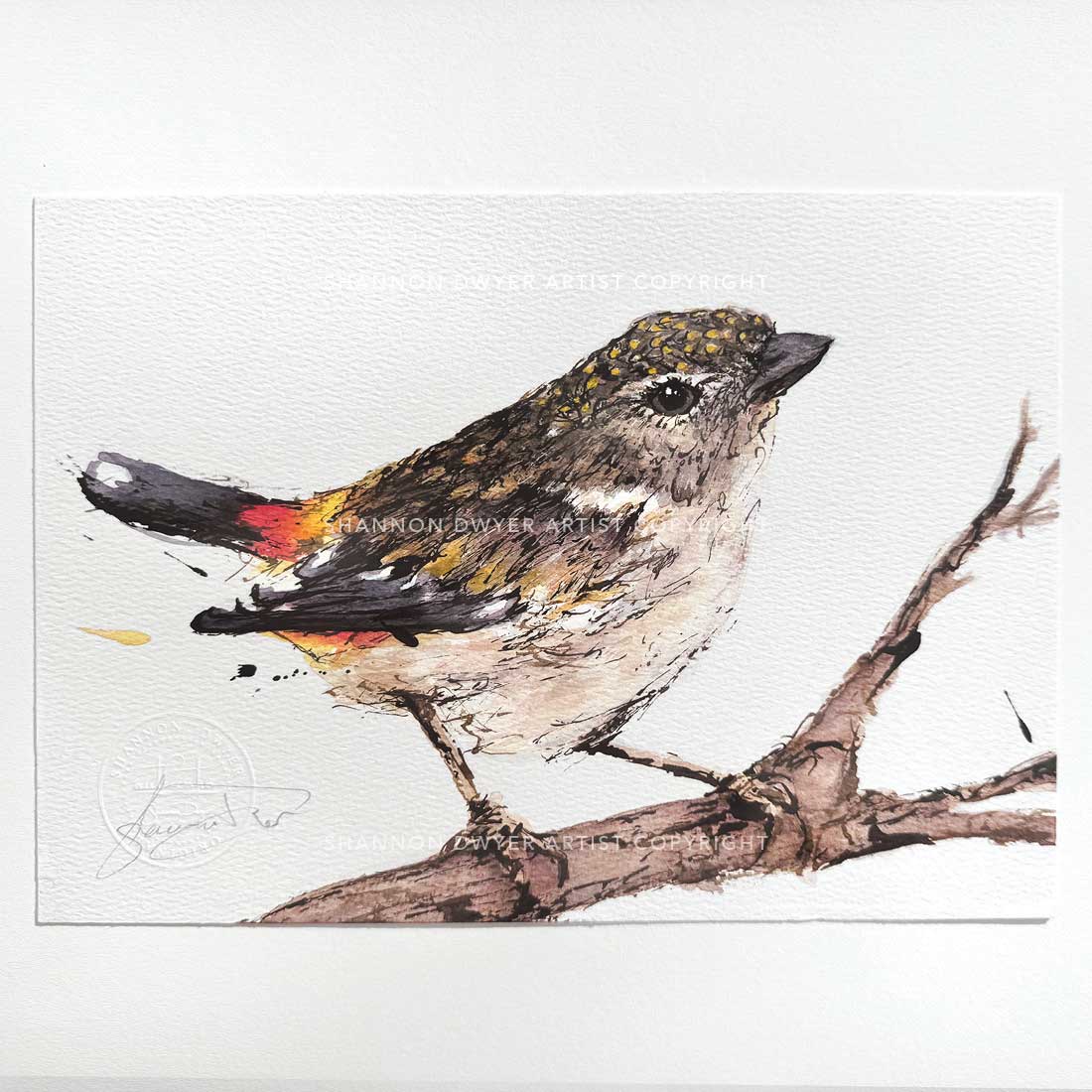
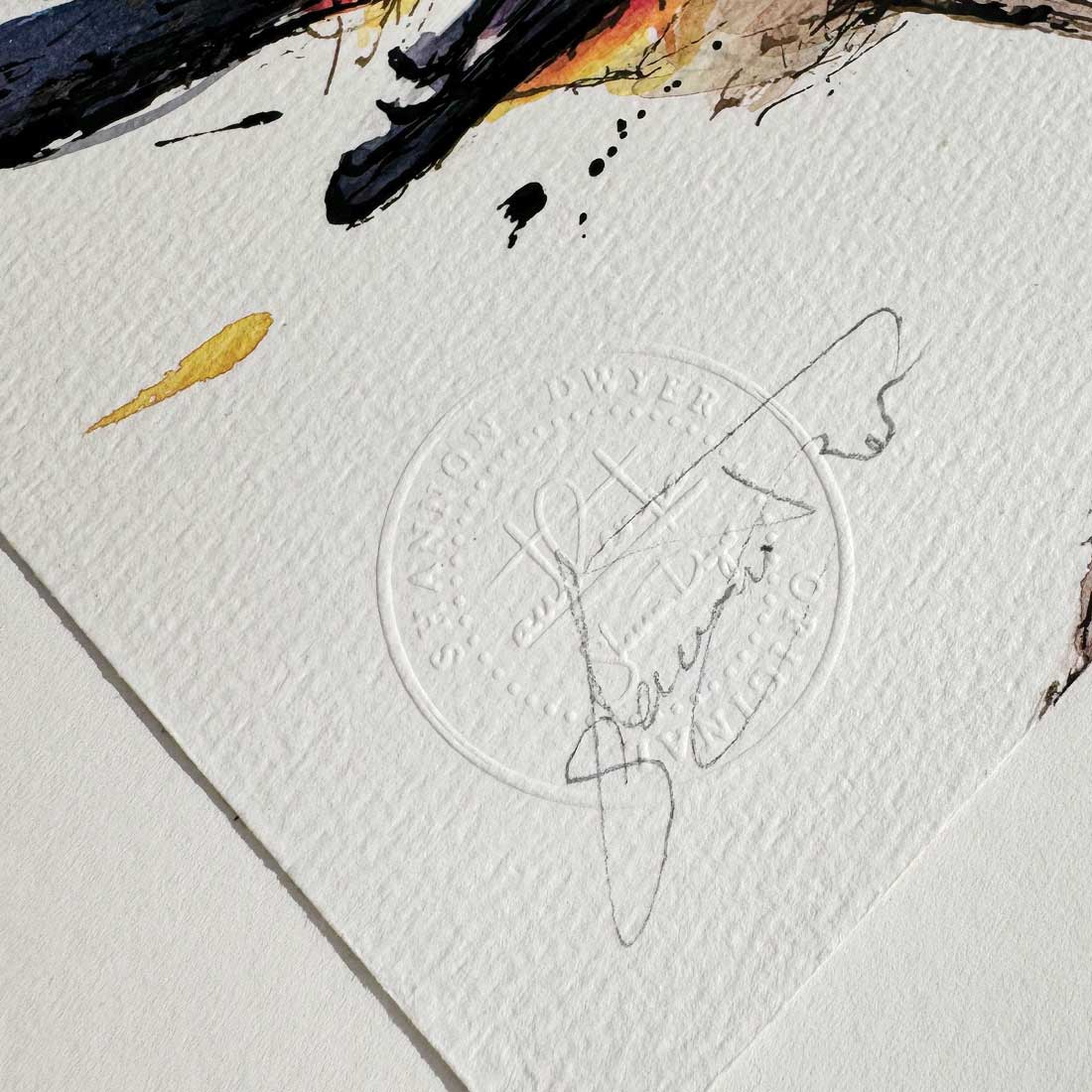
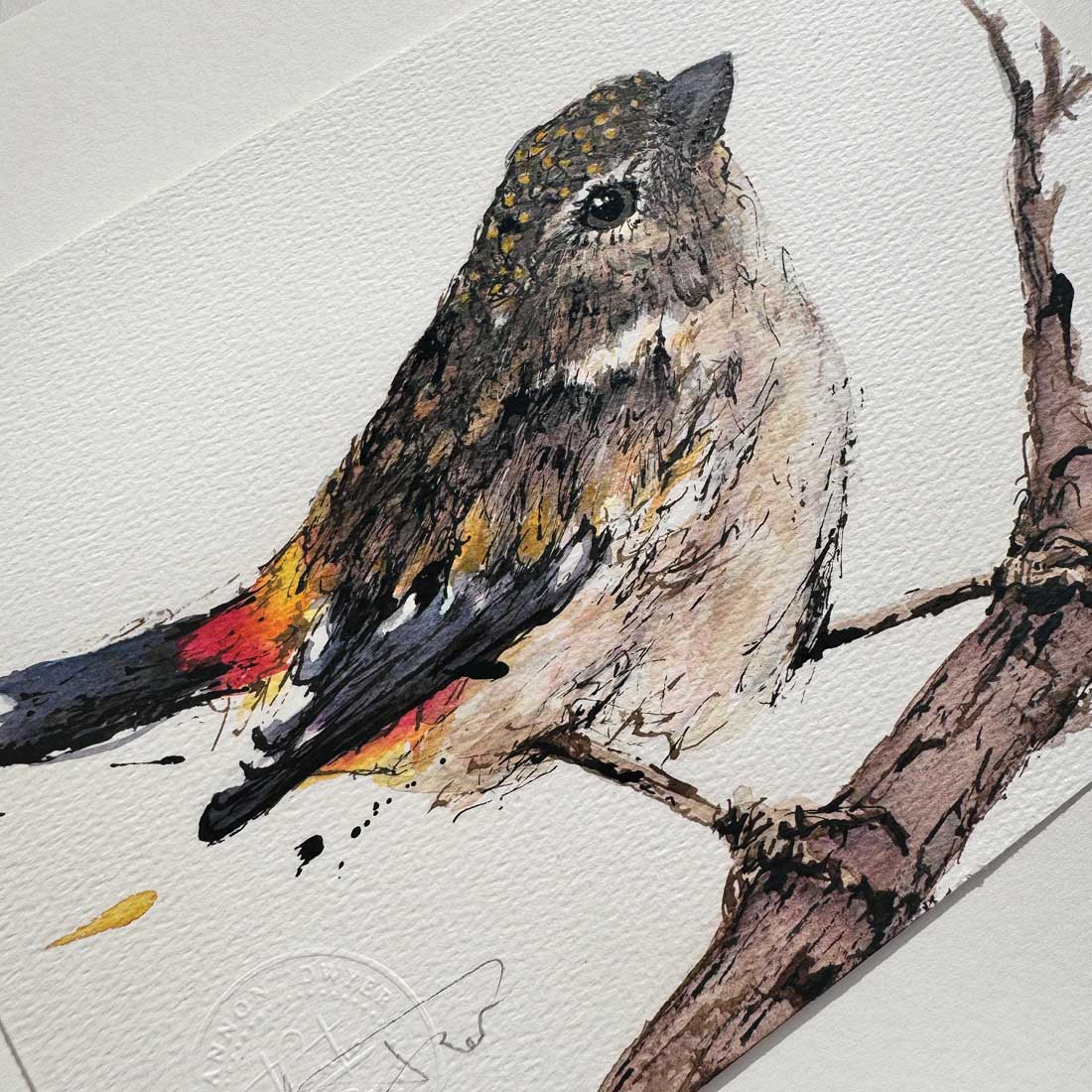
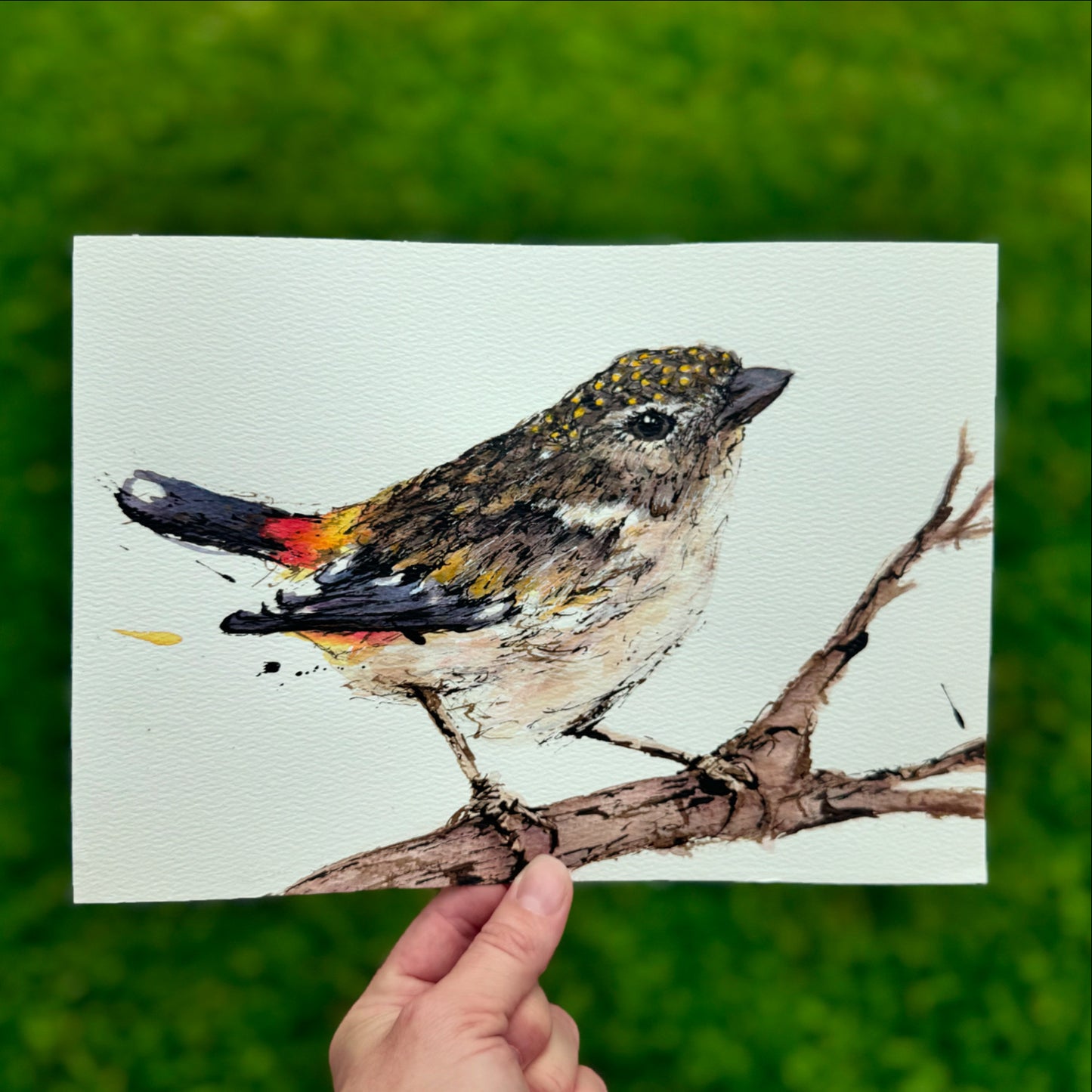
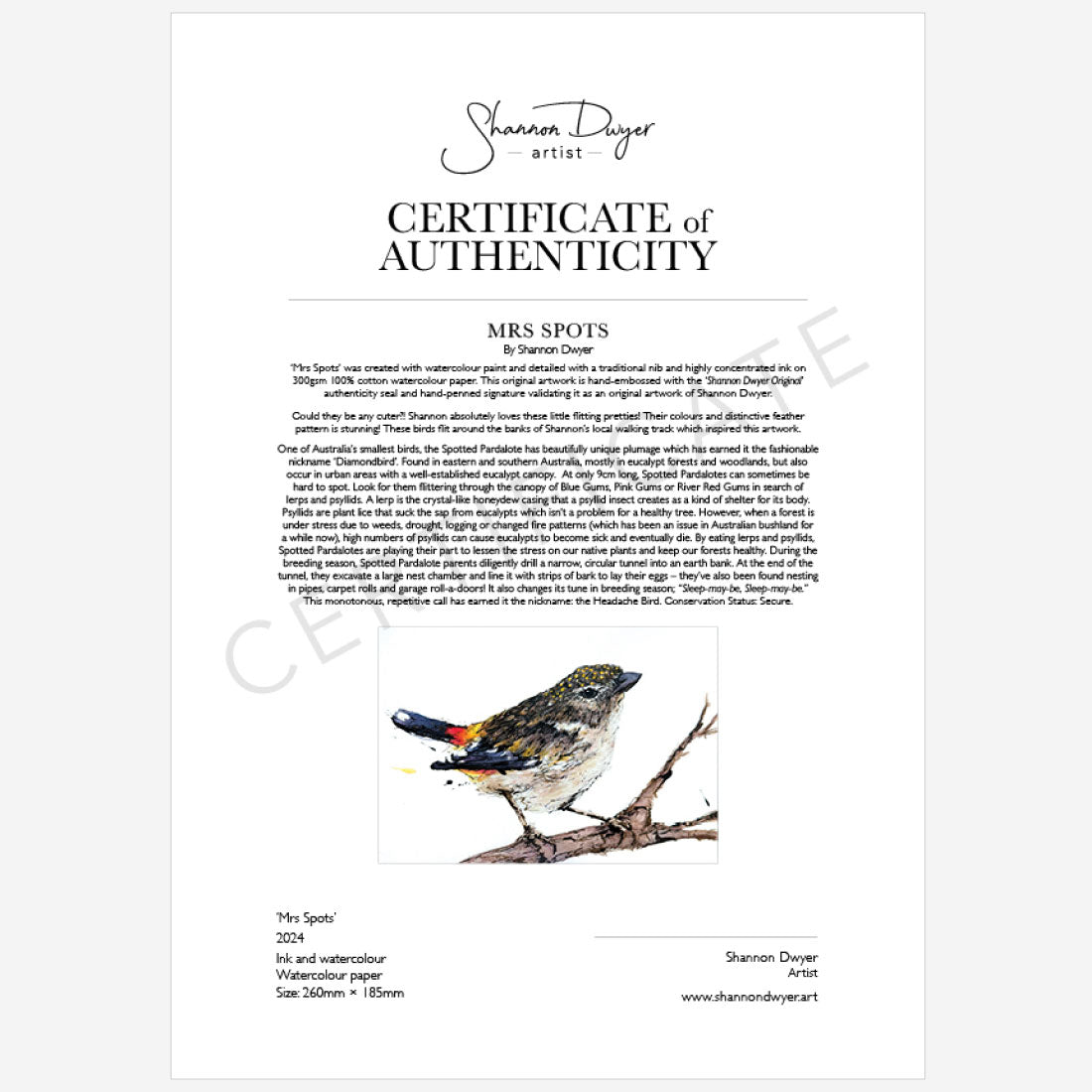
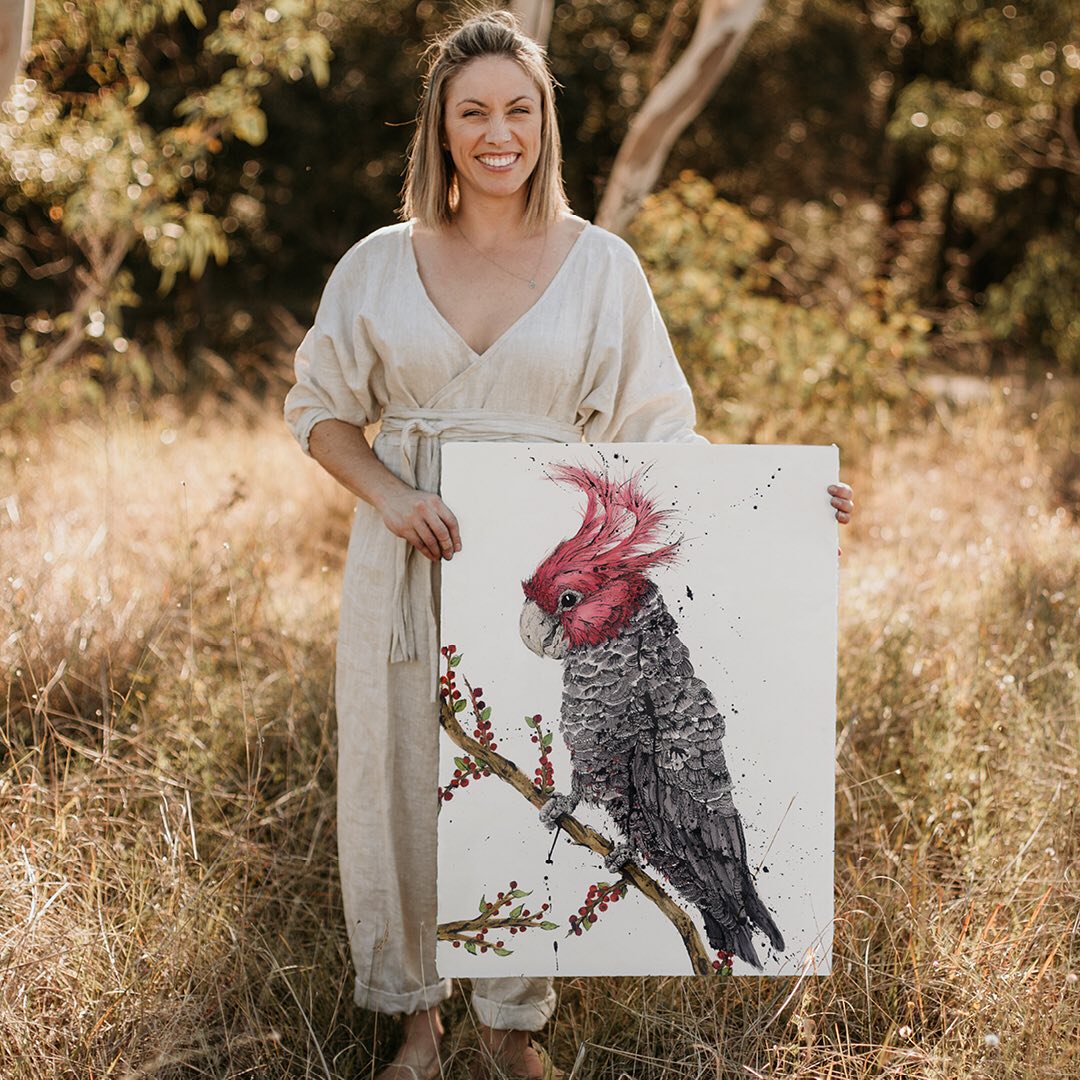
About the Artist
Meet Shannon Dwyer, an Australian artist dedicated to celebrating the true essence of ‘Australiana’.
With a vibrant and whimsical style, Shannon's work is ever-inspired by the incredibly unique and extraordinary wildlife of Australia and a desire to push the message of the preservation of our phenomenal natural world.

Created with watercolour paint and detailed with a traditional nib and highly concentrated ink on 425gsm 100% cotton watercolour paper.
Size: 260mm × 185mm
This original artwork is embossed with the ‘Shannon Dwyer Original’ authenticity seal and hand-penned signature validating it as an original artwork of Shannon Dwyer.
Artwork is also accompanied by a signed Certificate of Authenticity.
Created with watercolour paint and detailed with a traditional nib and highly concentrated ink on 425gsm 100% cotton watercolour paper.
Size: 260mm × 185mm
This original artwork is embossed with the ‘Shannon Dwyer Original’ authenticity seal and hand-penned signature validating it as an original artwork of Shannon Dwyer.
Artwork is also accompanied by a signed Certificate of Authenticity.






